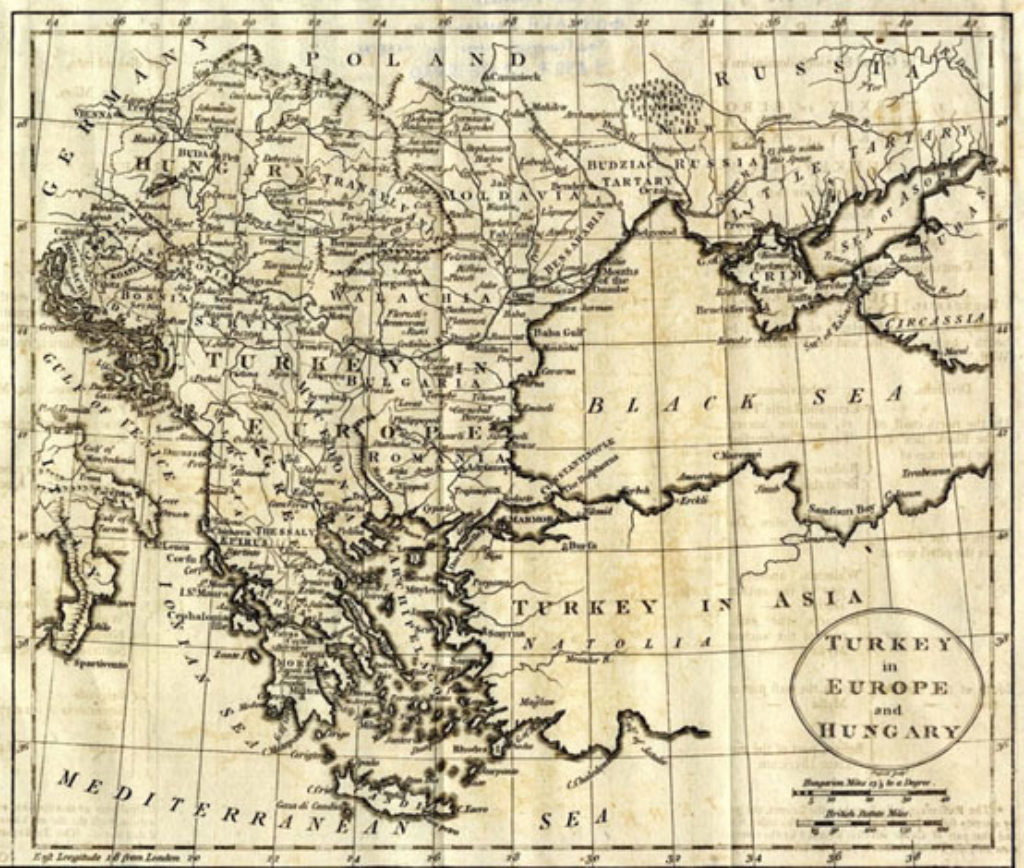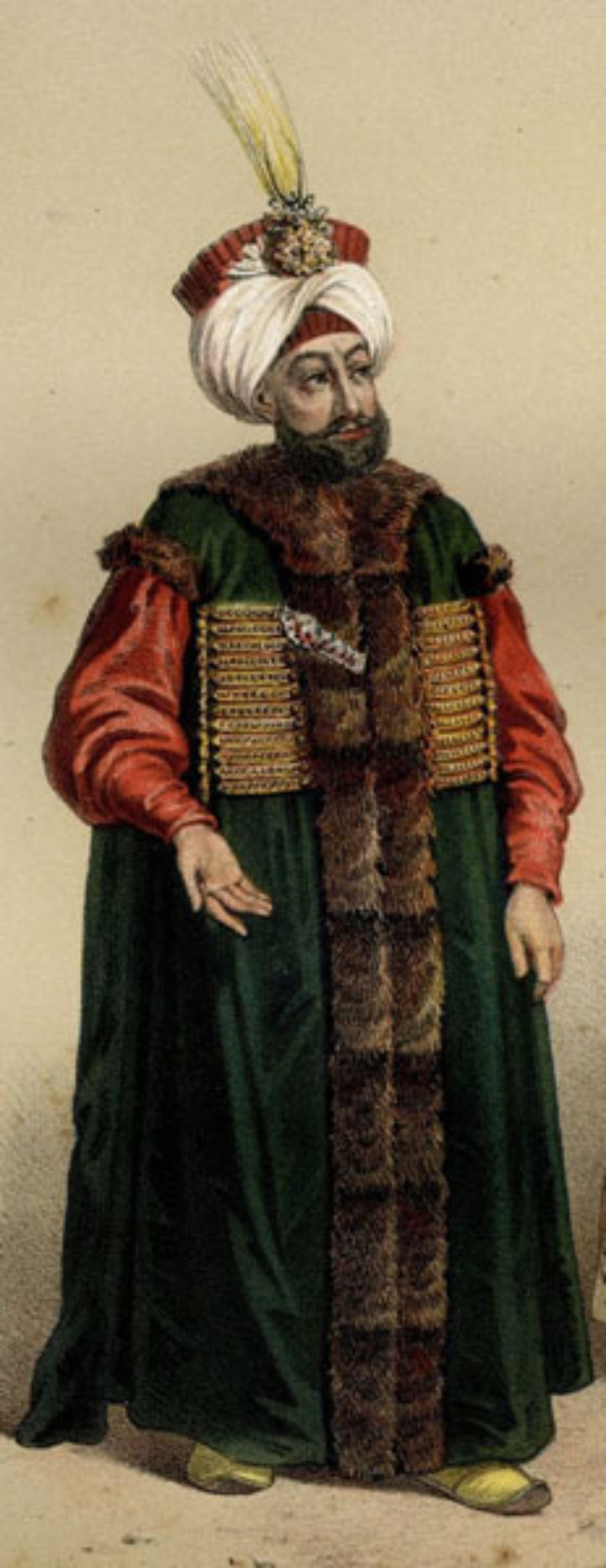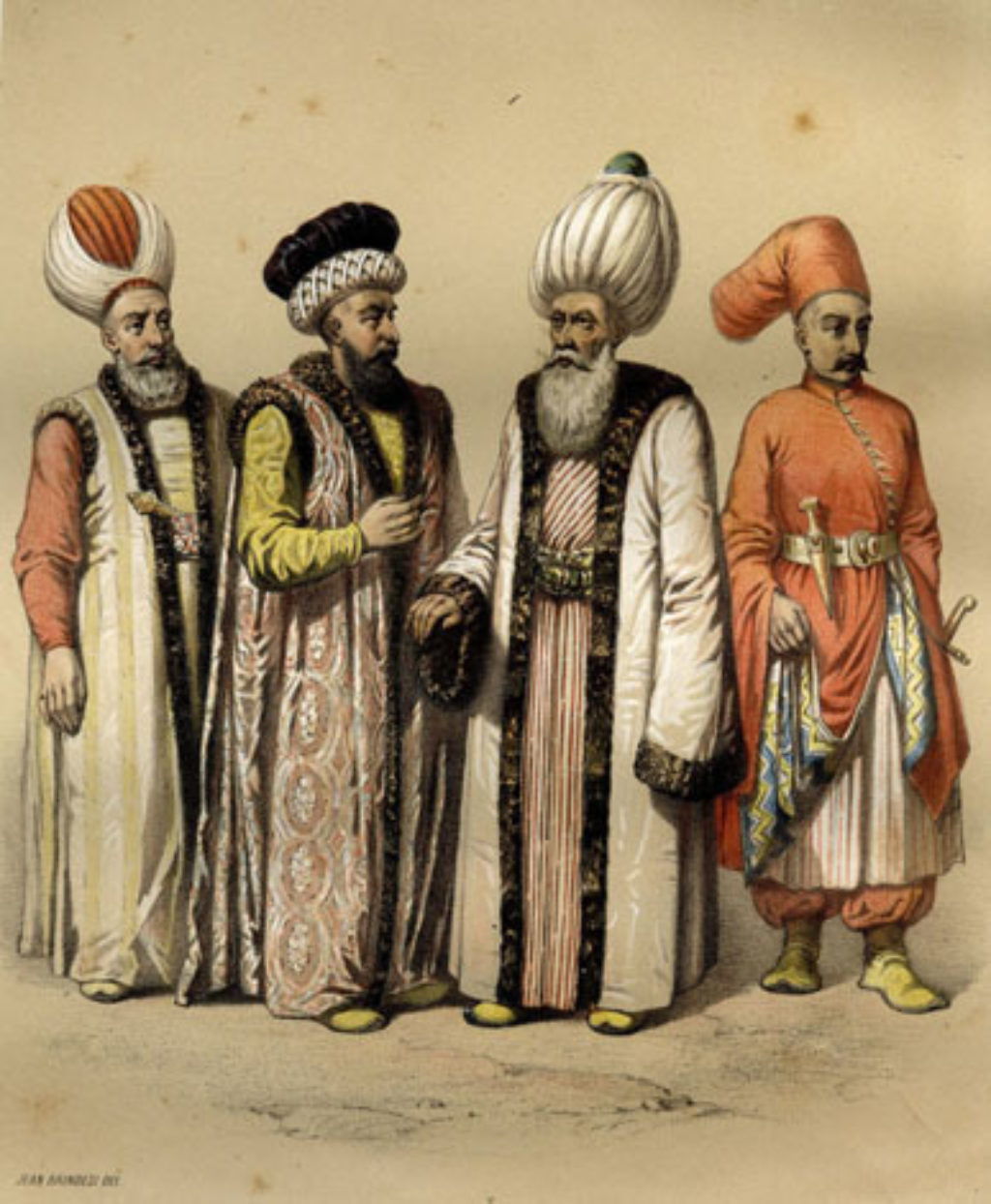THE OTTOMAN EMPIRE IN THE LATE 18TH AND EARLY 19TH CENTURY
A Vast Empire
A Vast Empire
In the late 18th century, the Ottoman Empire was a vast expanse covering three million square kilometres, from the Danube and the shores of Africa to the Arabian Peninsula and present-day Iraq. Irrespective of variations from place to place, the population of 25 to 30 million was relatively limited compared to other, smaller-sized European states. Perennial problems such as wars, harvest failures and epidemics prevented the empire from following the upward trend recorded in the rest of Europe over the same period. The population, almost 85% of which lived in rural areas, consisted of a whole host of cultural and religious groups. Population distribution in the imperial capital of Constantinople was a case in point: only half of its 600,000 residents were Muslims. Of the remainder, 200,000 were termed Greeks and 80,000 Armenians, while 3,000 hailed from western countries.
Economy and Administration
Economy and Administration
The bulk of economic activity in the Ottoman Empire was based on farming, and secondly on small industry and other production. On account of the empire’s vast expanse, it is hard to gain a clear overall picture of how well-developed trade was. A large part of commercial activity concerned exchanges within the empire, though external trade was equally important. The main source of fiscal revenue was in taxes on agricultural output, which in the 18th century was collected by lifelong lease to private tax farmers (malikiane). Within the terms of broader changes in the second half of the same century, a new class known as the Ayan or Ayanides (notables) emerged on the scene. They undertook to administer several sub-provinces, performing the key functions of tax collection and raising an army. That being said, some of their number, such as Ali Pasha of Ioannina, gradually accumulated sufficient wealth and power to turn against the central authority, going as far as to wage war against it.
Reform Efforts and Internal Conflicts
Reform Efforts and Internal Conflicts
In the second half of the 18th century, the Ottoman Empire was not in a position to keep pace with the broader changes being carried out in Europe with regard to administration, the economy and military organisation. This weakness was brought to the fore by successive defeats in the sixth (1768-1774) and seventh (1787-1792) Ottoman-Russian wars, pointing to the need for urgent reforms. Sultan Selim III (1789-1807) initially attempted to press ahead with reorganising the administration, provoking a backlash from constituent groups, which, with the Janissaries at their forefront, toppled him in 1807. In signing the Bill of Alliance (Sened-iIttifak), the Ayans offered their conditional support to the new Sultan, Mahmut II, but he too was forced to backtrack on his first efforts at reform. Gradually, however, he did manage to impose his will, coming into conflict with the Ayans and abolishing the Janissary corps in 1826.
Under the Sway of European Developments
Under the Sway of European Developments
As part of his policy, Selim III strengthened relations with the European kingdoms, hiring French officers and establishing embassies in various capitals. The French Revolution was initially viewed in a positive light, as the hitherto traditional rivals of the Ottoman Empire focused on the war against the French Republic. This stance altered after the Ionian Islands were ceded to France in 1797, and chiefly after the fall of Egypt in 1798. Yet even the upper classes gradually came to accept some of the new ideas and approaches. All the same, concepts such as liberalism, parliamentary government or patriotism were not to gain particularly widespread currency until the mid-19th century. By contrast, greater interest in them was shown by constituent groups within the Empire, chiefly among the Orthodox Christian merchants of the Balkans. Their contact with the modern networks in Europe paved the way both for the Serbian uprisings in 1804 and 1813 and for the Greek Revolution of 1821.




